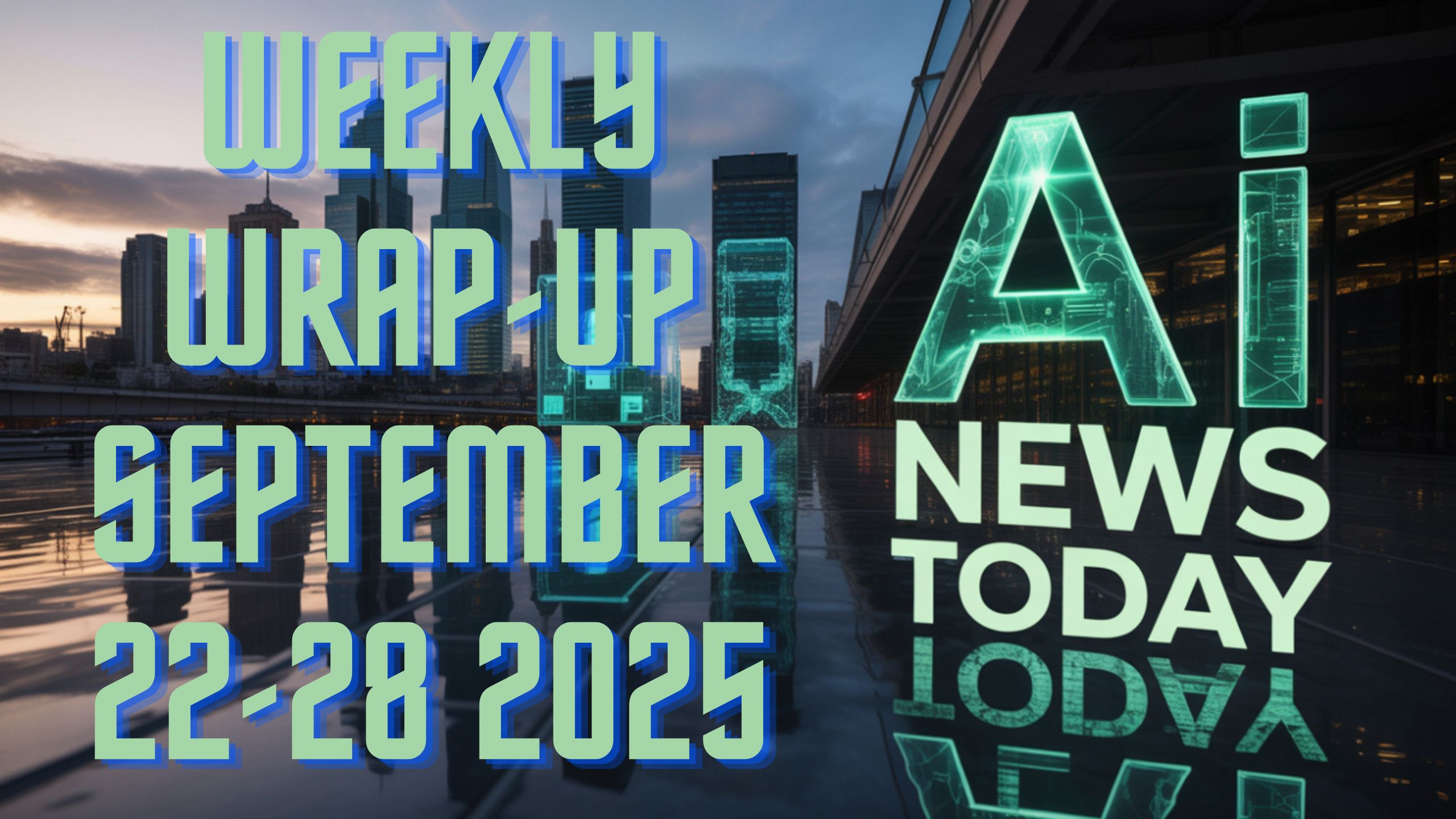AI News Weekly Wrap-Up USA (September 22-28, 2025)– The past week has been a defining chapter for AI infrastructure in the United States, marked by an unprecedented surge in data center expansion, federal oversight, market analysis, and clinical AI innovation. With the Stargate initiative spearheaded by OpenAI, Oracle, and SoftBank, the trajectory of global compute capacity is being redrawn. Let us break down the critical developments that shape the future of AI in the U.S. and beyond.
Stargate Expansion: New U.S. Data Center Sites Drive Compute Growth
The Stargate alliance of OpenAI, Oracle, and SoftBank has unveiled five new U.S. data center sites designed to transform the AI compute landscape. These locations include:
- Shackelford County, Texas
- Doña Ana County, New Mexico
- Lordstown, Ohio
- Milam County, Texas
- A new Midwest site (location undisclosed)
These expansions bring Stargate’s planned compute capacity to nearly 7 GW, with over $400 billion in committed investment. By the end of 2025, Stargate aims to push this figure to 10 GW, setting an unparalleled benchmark in AI infrastructure development.
Abilene Operations Begin
Early operations have already commenced in Abilene, Texas, signaling the first tangible milestone in this multi-year expansion. This rapid deployment underscores the urgency to meet the exploding demand for AI compute power.
Financing Challenges and Feasibility Questions
While the expansion announcements inspire confidence, the financial sustainability of such projects remains under scrutiny. Analysts point out that much of the $400 billion capex could rely on:
- Debt financing
- Vendor-backed support models
- Uncertain near-term cash flows
The scale of investment has sparked debate about whether current AI revenues can sustain such aggressive capital outlays. Furthermore, the interconnect and transmission bottlenecks in the U.S. grid could pose delays stretching into 2026–2028, threatening timelines for full capacity activation.
SoftBank’s Fast-Build Strategy and Nvidia’s 10 GW Deployment
One of the standout themes this week was SoftBank’s rapid deployment approach. At Lordstown and Milam County, capacity scaling toward 1.5 GW within 18 months is underway.
This accelerated buildout dovetails with Nvidia’s commitment to deliver at least 10 GW of AI systems for OpenAI under a prospective $100 billion arrangement. Such synergies between hardware giants and hyperscale operators highlight the intertwined strategies shaping the AI ecosystem.
Federal Oversight: FTC’s Youth-Facing Chatbot Inquiry
On the regulatory front, the Federal Trade Commission (FTC) advanced its Section 6(b) inquiry into youth-facing AI chatbots. The agency issued orders requiring major AI providers to disclose:
- Monetization practices
- Testing and safety frameworks
- Moderation and age-gating controls
- Data privacy and usage policies
This marks a pivotal shift from broad policy announcements to enforceable documentation requirements, with potential Congressional hearings expected in the coming months. The FTC’s involvement signals rising concerns about child safety and commercialization in AI applications.
Market Reactions and Strategic Implications
Wall Street remains closely aligned with hyperscale developments, viewing AI data center expansion as a proxy for the sector’s growth cycle. However, caution prevails as analysts warn of:
- Profitability challenges amid soaring capex
- Power supply shortages are impacting rollout speed
- Uncertainty in converting massive investment into earnings growth
Corporate leaders have countered these concerns by highlighting enterprise AI adoption and workforce transformation as immediate value drivers. Yet, many stress that governance, licensing frameworks, and compliance requirements will ultimately determine the monetization trajectory of consumer-facing AI products.
Research and Clinical AI: MIT’s Breakthrough in Image Annotation
Beyond infrastructure, the week also spotlighted innovation in domain-specific AI applications. The Massachusetts Institute of Technology (MIT) introduced an interactive AI system to accelerate biomedical image annotation.
This breakthrough promises to:
- Shorten trial workflows in clinical research
- Streamline translational studies
- Improve the efficiency of biomedical data handling
By reducing the time and resources needed for clinical imaging tasks, MIT’s development marks an important step in AI-driven healthcare solutions.
Policy and Geopolitical Context: AI on the Global Security Agenda
The U.S. Administration’s AI Action Plan continues to influence global discussions, particularly balancing domestic compute expansion with export controls.
This week, debates at the United Nations elevated AI to a standing item on the global security agenda, reflecting the technology’s rising geopolitical significance. Key priorities include:
- Securing supply chains for critical AI components
- Balancing national competitiveness with international collaboration
- Ensuring ethical AI adoption in security and defense contexts
What to Watch Next: Key Milestones Ahead
Looking forward, several pivotal developments will define the AI landscape in Q4 2025 and beyond:
- Site-by-Site Progress
- Permitting updates, interconnect approvals, and power purchase agreements (PPAs) for the new Stargate locations.
- Financing Structures
- Greater clarity on how vendor-backed deployments and debt financing will support long-term sustainability.
- FTC Oversight
- Interim disclosures from the youth-focused chatbot inquiry, with possible Congressional hearings on monetization and safety practices.
- Market Performance
- Earnings updates tied to Nvidia system deliveries, utilization rates, and the pace of Lordstown and Abilene expansions.
Conclusion: A Week That Reshaped AI’s Future
The week of September 22–28, 2025, was defined by monumental infrastructure announcements, intensifying federal scrutiny, market uncertainty, and healthcare AI breakthroughs.
- The Stargate initiative cemented the U.S. as the global AI compute growth epicentre.
- Federal agencies sharpened their focus on youth safety and AI monetization practices.
- Markets wrestled with the balance between capex and profitability.
- Research advancements demonstrated the promise of AI in high-impact domains like healthcare.
As we move forward, the combination of infrastructure buildout, regulatory clarity, and research innovation will determine whether today’s investments translate into sustainable long-term AI value.
AITeam is the dedicated editorial team of Android Infotech, consisting of experts and enthusiasts specialized in Android-related topics, including app development, software updates, and the latest tech trends. With a passion for technology and years of experience, our team aims to provide accurate, insightful, and up-to-date information to help developers, tech enthusiasts, and readers stay ahead in the Android ecosystem.
For more about our team, visit our About Us page.




Leave a Reply